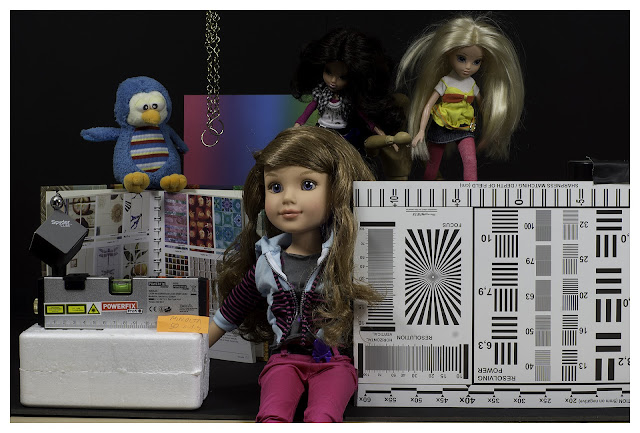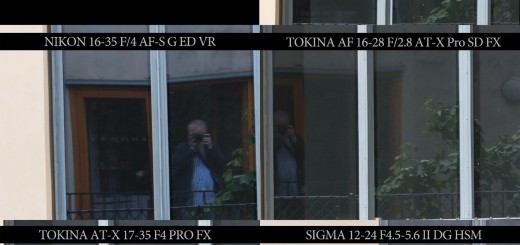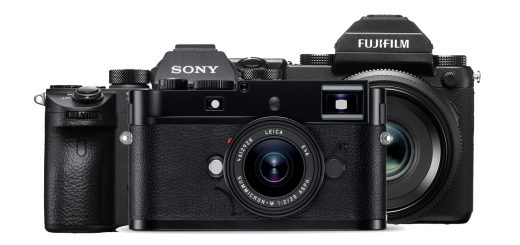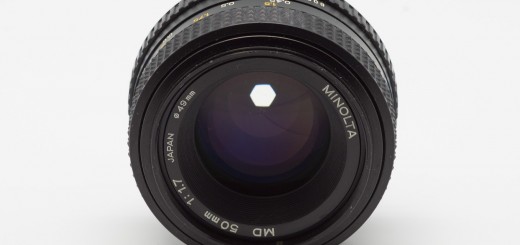Minolta Rokkor MD 50mm f1.4 – Legacy 50mm. Which one is the best? Part 5
Handling the lens on NEX is very pleasant, it is well balanced and focus ring turns smoothly. Aperture ring on my sample has some wobbling, but not a big problem.
Lens and Camera:
Following test shows lens character, color, contrast and out of focus rendition at most apertures. Focusing was at the focus target next to the doll in front. That should be aligned with the dolls right eye in terms of focus plane. Shot from tripod with remote, ISO 100, NEX 7, RAW developed in LR 3.6 with standard settings, exported for downsizing in Photoshop. No other corrections applied.
 |
| Sony NEX 7 + Minolta Rokkor MD 50mm f1.4 at f1.4 |
 |
| Sony NEX 7 + Minolta Rokkor MD 50mm f1.4 at f2 |
 |
| Sony NEX 7 + Minolta Rokkor MD 50mm f1.4 at f2.8 |
 |
| Sony NEX 7 + Minolta Rokkor MD 50mm f1.4 at f5.6 |
 |
| Sony NEX 7 + Minolta Rokkor MD 50mm f1.4 at f8 |
 |
| Sony NEX 7 + Minolta Rokkor MD 50mm f1.4 at f11 |
 |
| Sony NEX 7 + Minolta Rokkor MD 50mm f1.4 at f16 |
Here are 100% crops of the focus plane area.
This Minolta is not the sharpest lens that I tested so far, but it performs well. Typical is softness wide open that improves at f2 already, and reach the peak performance at f5.6. Lens manage diffraction quite well even at higher apertures, which makes him suitable for the landscape photography.
Resolution chart is shown bellow with respectful 100 crops.
Minolta MD 50 f1.4 shows very even sharpness across the target. Of course corners are softer, but still better than many other tested lenses so far. Vignetting seems to be also very good controlled on APS-C and there is no significant yellowish cast in the corners that shows up with most of other lenses.
Good corner performance was proofed also in the field test at longer distance.
As with all so far tested 50mm lenses, distortion is negligible.
 |
| Sony NEX 7 + Minolta Rokkor MD 50mm f1.4 at f5.6 |
Here are couple of portraits in a natural light without flash.
 |
| Nex 7 + Minolta MD Rokkor 50mm f1.4 at f1.4 |
 |
| Nex 7 + Minolta MD Rokkor 50mm f1.4 at f2.8 |
Colors are rich and saturated and contrast is good even wide open. If the slight softness wide open doesn’t bother you, it can be nice portrait lens on APS-C. I would however suggest to use it at f2.8 or f4 for portraits.
Bokeh:
Minolta shows very nice rendering of out of focus areas. It still doesn’t beat my so far favourite Yashinon DX 50 f1.7, but it is very close. Even at f4 Bokeh remains smooth and pleasant.
 |
| Nex 7 + Minolta MD Rokkor 50mm f1.4 at f1.4 |
 |
| Nex 7 + Minolta MD Rokkor 50mm f1.4 at f4 |
I believe, that due to very good corner performance, together with nice color rendition and good overall sharpness at f5.6 and f8 (for an old lens), Minolta will give its best in the landscape, cityscape or reproduction department.
 |
| Sony NEX 7 + Minolta Rokkor 50mm f1.4 at f5.6 |
 |
| Sony NEX 7 + Minolta Rokkor 50mm f1.4 at f8 |
Conclusion:
Minolta MD 50 f1.4 is a very solid performer. It doesn’t come above the others in any department, but it shows impressive overall performance, and therefore can be recommended as an all around alternative to the native mounts. With its reasonable price today, it is certainly very good choice.

























Thank you very much for publishing this thorough test, which was interesting and useful. I have exactly the same version of the lens, together with copies of 24mm f2.8 and 35mm f2.8 MD Rokkors respectively. I’ve attached them all to Panasonic G-series cameras, but would prefer a somewhat larger sensor to do greater justice to them and provide more usable focal lengths. To be honest, I find Sony cameras hard to love, but perhaps the results would win me over in the end.
Great that you have Minolta. It is a nice lens. To be honest, I also have hard time to love Sony cameras recently, but my reasons probably differ. I am very angry on the trend to make software corrections (mainly lens) “hard coded” to the RAW files. It is a dirty marketing behind this new trend, and I always hate to be part of it. But I am afraid that Panasonic, behave the same, and Olympus is joining the game too.
I am seriously considering to switch back to film, until this stupidity (if ever) ends.
very nice review!!! thanks for this!
Great review! I just got the same lens and love it! Using it with a Sony NEX 6 is a breeze.
Great review, thanks for sharing. Can this lens be used on a Nikon D90/D800, either with an adapter?
Hi, thank you for reading. Unfortunately Nikon mount has one of the longest flange distances (distance from camera mount ring (or rear of the lens) to the sensor (film plane))
Because of that, there is only few 35mm systems that can be adapted for Nikon, one of those being Leica R (but mount needs to be replaced).
There are of course adapters that will allow you to use Minolta MD lens on Nikon cameras, but it will either not be possible to focus to infinity, or adapter will contain corrective optics and those usually significantly affect image quality.
But Nikon mount has one advantage too. It is compatible with most Nikon lenses ever made for 35mm SLR cameras, and there are many great old lenses for the system too. I have very nice Nikkor 50 f/1.4 SC (single coated) lens, that will be comparable with this Rokkor. There are newer 50mm f/1.4 Ai-S lenses with multi-coating, that are one of the best standard lenses but rather expensive.
Cheers, Viktor
Thanks for review, it was excellent and very informative.
thank you 🙂
I believe you had a defective sample. Performance of this lens wide open is usually excellent. I also believe instead of testing the MD you maybe should have tried the Minolta MC 50mm F1.4 PG although the differences are minuscule. I say all this because test performed with Hasselblad equipment and published in the old Photodo, had only the Leica Summilux 50 1.4 topped the MC Minolta in wide open measurements. Your test while good do not take into much account for having a weak sample. I own several 50s and I’m not partial to anyone or any one brand. I find that each has a strong suit and any that do not equal out at smaller apertures unless they were specifically designed for stronger near performances like Pentax did for instance. Dr. Lui of Washington University in St. Louis Missouri is a well regarded mathematician or number cruncher extraordinaire and he compiled a list of the top 10 1.4’s and 1.7’s using “old” Photodo measured data results that were done in the past, both AF and manuals make up the list. I believe the Contax Planar’s were sharpest over all and no Konica’s made the list. Either they were never tested or did not rate, however before making any conclusion please do note that the Konica M 50mm is a top 5 overall Photodo measured lens …which leads one to believe that Konica’s were indeed tested. I own both a 1.7 and 1.4, both have tremendous resolution and neutral colors…but the 1.7 second version is sharpest at F8 ….. being designed and slanted towards distance performance. The first version has half stops and better near performance …both have the same optics but obviously were later shifted in design …. exactly like Nikon did with their 55mm Micro F3.5 lenses when they shifted design to favor more distance performance. To gain something has to give formula.
Hi Petroric,
I fully agree with you about possibility of a bad sample. I mentioned in many of my later reviews, that sample condition of the particular legacy lens might have much bigger impact on lens rendering that its original construction.
On top of that, those tests were done with APS-C high density sensor, which might affect results as well Most of all, none of those lenses has floating lens element to ensure similar performance across focal plane distance (as you mentioned). In other words, because of slight astigmatism at certain focal plane distances, some lenses would perform better at close or medium distances, while other will shine at long distances. Differences in MTF50 e.g. (if measurable) might be over 25% with a change of focus plane distance.
Meanwhile I tried several copies of Minolta MD 50/1.4, MC 50/1.4 PG and latest 50/1.4 and PG was really best of them, but differences were rather small across the range of tested samples. PG was also best built one.
BTW I have in plan to redo many of those 50mm lens tests on a FF sensor, but we are commercial site now and those tests might be offered for subscribers only… Maybe our boss will find different ways for monetization though 🙂
Cheers,
Viktor
I`ve tested this lens against the MC 50/1.4 PG, and while the MC is indeed a bit sharper overall, the MD has better contrast, especially wide open. Also the MD shows much better quality of bokeh and the depth of field is quite a lot narrower at similar f-stops, so the out of focus area is larger. If you mind about sharpness, the MC is best, for contrast and bokeh the MD (rokkor) is the better choice. I think that bokeh has a stronger influence on the results then sharpness, so prefer the MD version.
Hi Barabas,
once again I would like to mention the importance of sample variation. Most of those legacy lenses had been aging in different conditions and that, together with owners care, could influence lens performance much more than original design characteristics.
Cheers,
Viktor
Hi Victor,
You`re right, concerning sharpness sample variation can influence lens performance quite a lot, not only by aging but already when bought new. However bokeh and contrast are not influenced by it as much as sharpness I think. If you give sample variation too much importance it does`t make sense to test and compare lenses anymore 😉
Anyway there is to much emphasis on sharpness in lens tests so it`s nice to see that you included bokeh, even at two different apertures.
Hi Barabas,
there are few reasons why rendering of OOF areas and contrast might be affected…
Damage or even removal of the coatings is the main suspect. Sometimes is very hard to notice damaged or removed coatings on one (usually front) or more elements. In a result, contrast is reduced and increased appearance of the hallo, manifests in a soft specular highlights rendering. I have two Zeiss 50/1.7 lenses that looks virtually the same, but one is extreamly soft wide open (includng smoother bokeh) while the other is very sharp with pronounced sphero-chromatism. I had to open bot lenses to realize that the first has removed coatings from the third element…
Another reason can be result of amateur lens opening and dissasembling.
Light haze is another reason for contrast reduction and increased softness including smoother bokeh.
Fungus on the rear element can damage the glass so that even when cleaned, rendered highlights could show “ants”, similar but less regular effect to “onion rings” (caused by aspherical molds).
Few more reasons could be listed, but my point is that you will hardly find two 20+ years old lenses performing the same (especially wide open) and sometimes differences are extreme.
I fully agree about sharpness overestimation though.
Cheers,
Viktor
Viktor, although this review was done at least 6yrs ago, it is relevant to me. I have the MD and am awaiting the MC. I plan on mounting to an A7. Barbaras thank you too.
Thank you so much for your reviews! Do you have a favorite for adapting to full frame mirrorless? Not necessarily the sharpest, but the best for color and contrast would be most important.
Hi, after many years I concluded that the condition of these old lenses is often more important than their initial optical quality.
That being said, for sharpness and contrast at f/1.4, my favorite would be Contax Zeiss Planar 50/1.4 C/Y and Topcor RE Topcor 58/1.4, Leica Summicron R Canada and later 50/2, CZJ Pancolar 50/1.8. Good sharpness but weaker contrast has Zeiss Ultron (Icarex) 50/1.8.
If money nor size are issues, I love Canon FDn 50/1.2 L and especially, Canon 55/1.2 S.S.C. Aspherical (great lens).
From the mainstream cost friendly brands I would pick Canon FDn 50/1.4 and Olympus 50/1.4 later serial number, with MC. (1.100.000+) Pentax, Minolta, Nikon, Yashica, Cosina, Ricoh, and many others are all very similar if you find a good copy. The newer the lens, the newer coatings should have and thus better micro contrast and sharpness.
My favorite 50mm on a FF are however two other lenses, but not because their sharpness or contrast wide open, rather for their signature subject isolation capabilities (weird bokeh, wignetting etc.) and these are MOG Domiron 50/2 and CZJ Biotar 50/1.4 (vignettes slightly on FF).
Lately I also had a lot of fun with a Lensbaby Twist 60 a Petzval design revival.
For the ultimate sharpness and micro contrast and for the very unique rendering capabilities, I choose Zeiss Otus 55/1.4.
Cheers,
Viktor
Hi Victor,
My husband & I dissembled my Helios 44-4 lens, and after several attempts and watching videos, we aren’t able to put it back together. I wondered if I could mail it to you and pay you to reassemble it.
Hi Pat, I’ll gladly do it, but I think that the labour and postal costs will be more than the lens itself. I am based in Prague, Czech Republic, EU. Have you look on our tutorial here: http://www.verybiglobo.com/restoring-helios-44-2-cla-tutorial-by-tomas-glavina/
Kind regards, Viktor